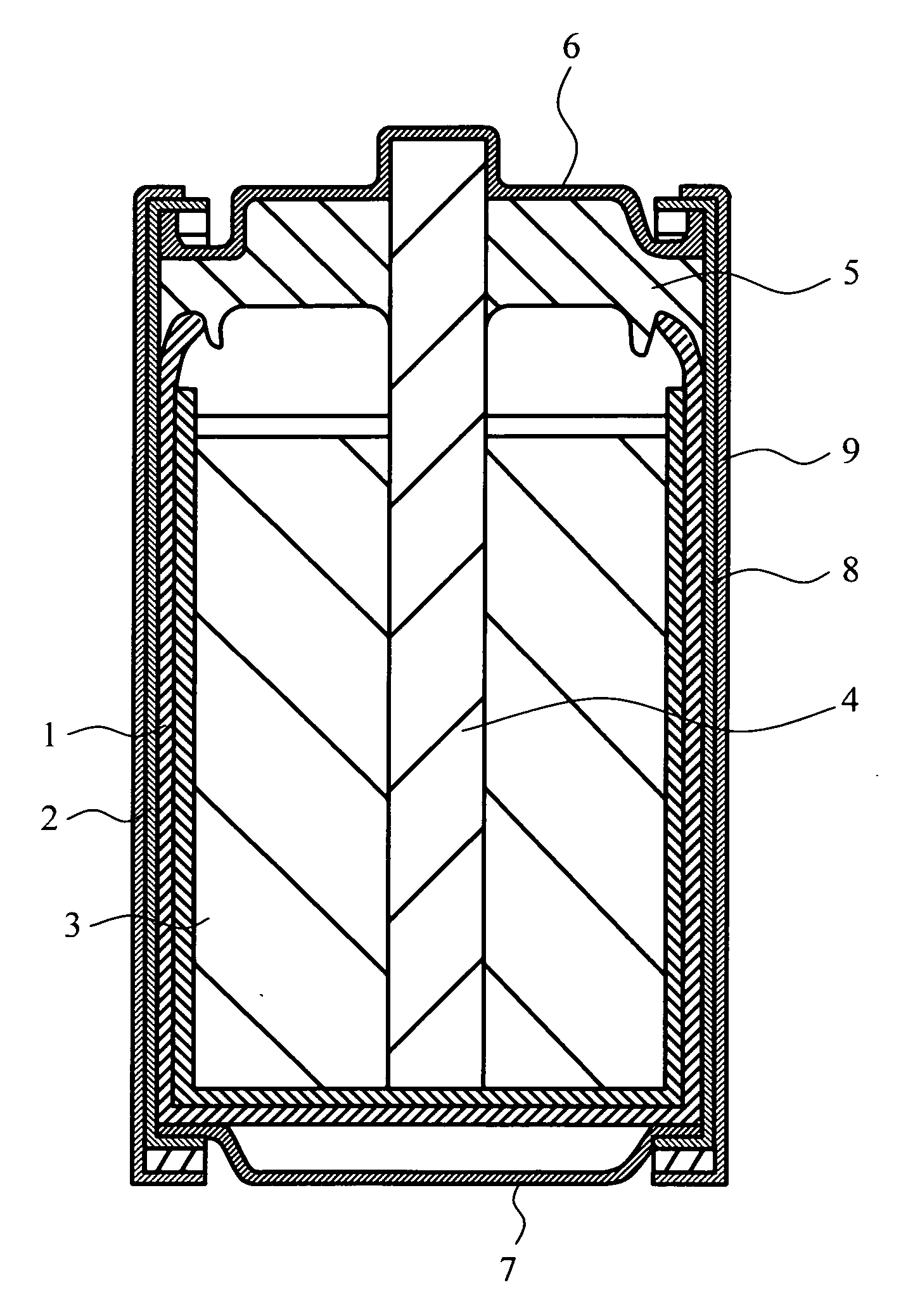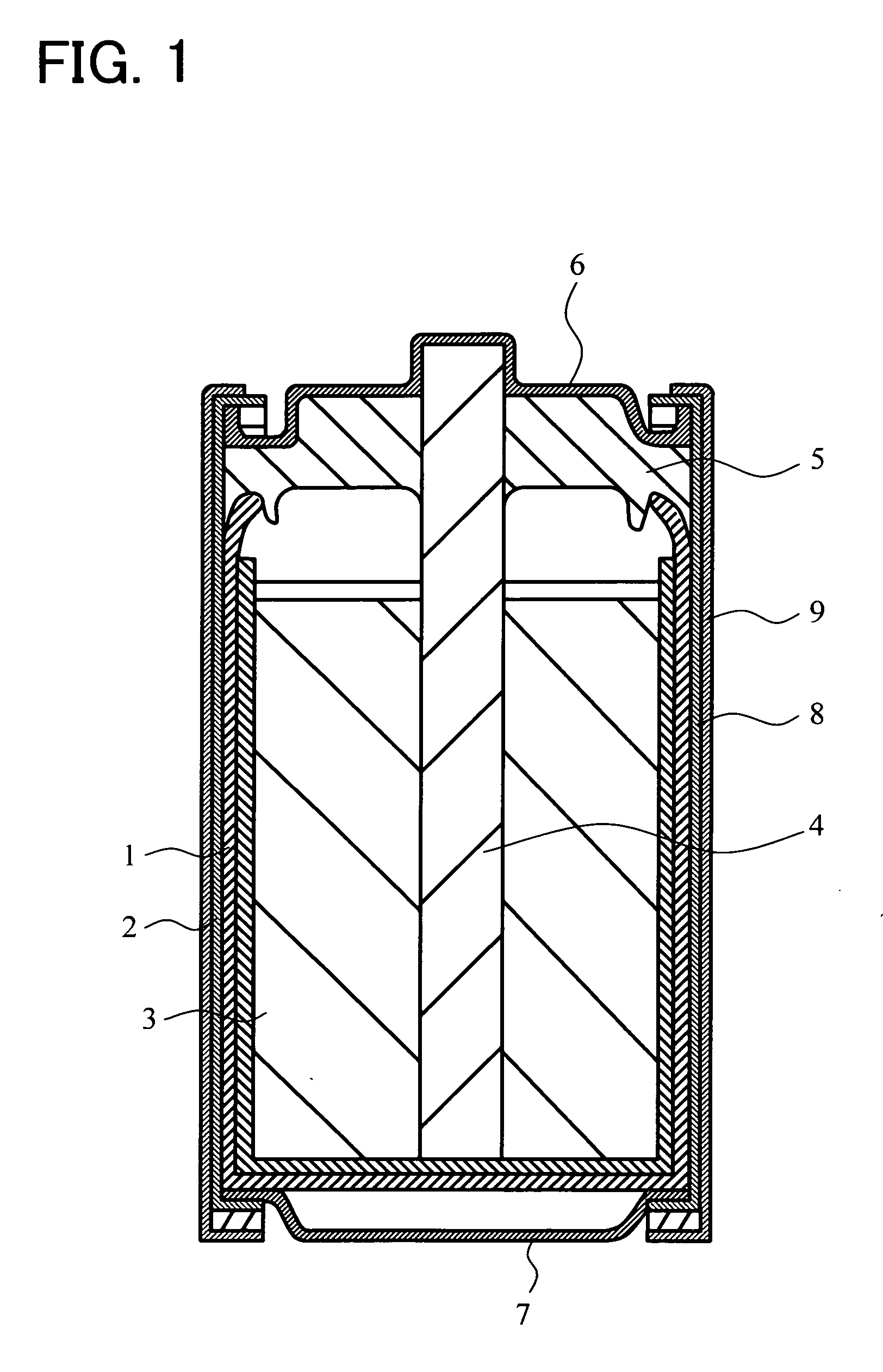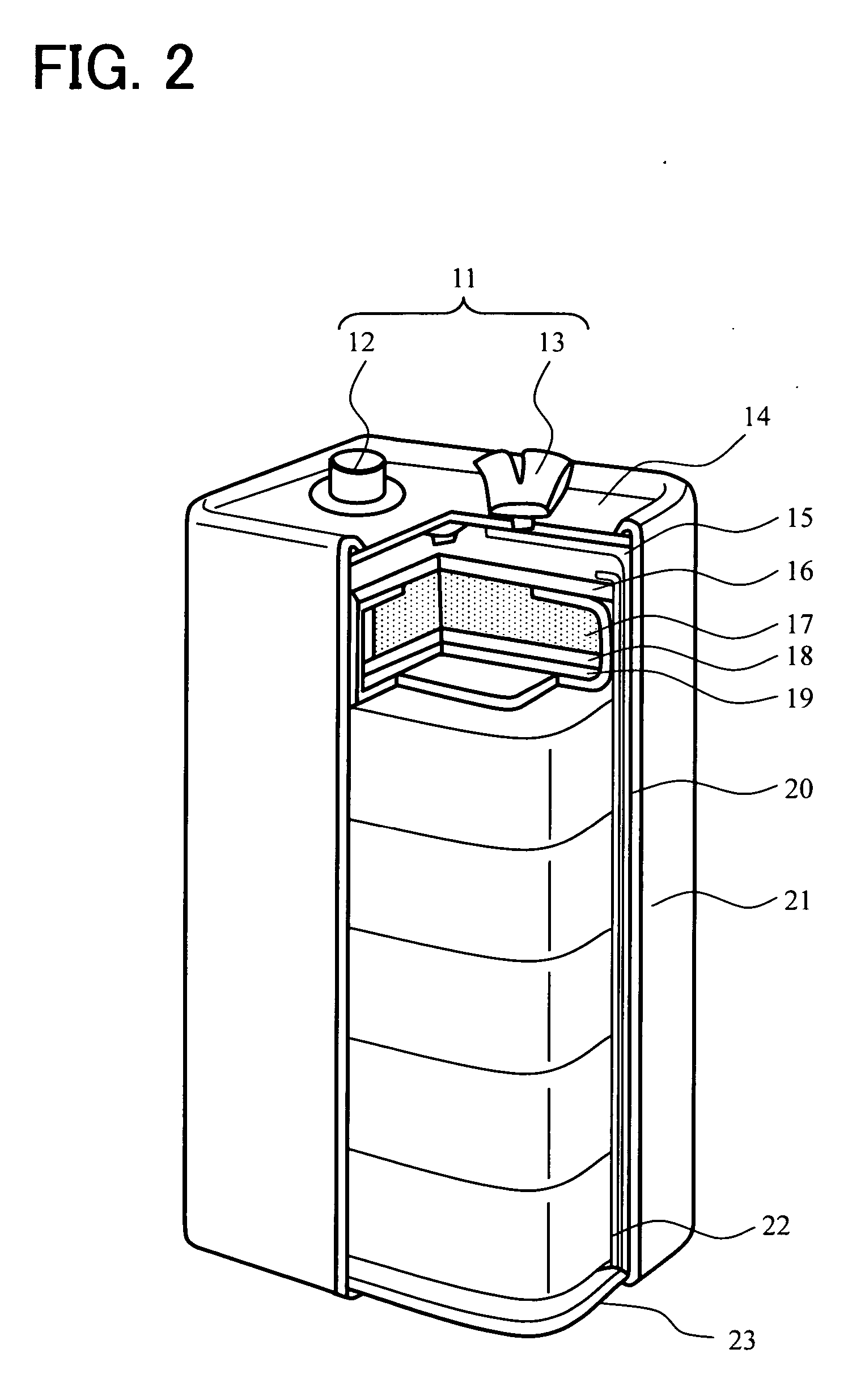Negative electrode active material for battery, anode can for battery, zinc negative plate for battery, manganese dry battery and method for manufacturing same
- Summary
- Abstract
- Description
- Claims
- Application Information
AI Technical Summary
Benefits of technology
Problems solved by technology
Method used
Image
Examples
example a
[0100] Following is detailed description of an example. Obtained was a battery anode zinc material from a lot of zinc ground metal purity more than 99.99 percent by mass, without adding lead but adding specified amount of bismuth or bismuth plus strontium, or bismuth plus barium, or bismuth plus zirconium. The zinc ground metal inevitably contained impurities such as copper, iron, and cadmium on the ppm order. Made were zinc pellets in designated dimensions out of a sheet made by hot rolling of the zinc alloy. Made were zinc cans 0.35 mm thick with bottom cover out of the zinc pellets by deep-drawing. Surface temperature of the work material was measured with laser pointer of Yokogawa digital heat emission thermometer 530 / 04. Visually inspected finish condition of the cans, and using a microscope observed was surface condition, dent or cracks. Further checked was metal structure and if any or no cracks. Made out was a R20 manganese dry battery with the zinc can. Then conducted was c...
example a1 to a15
, Comparative Example A1 to A4, and Reference Example A1
[0110] The table A1 herein below indicates result of the corrosion test by foregoing method of the anode active materials with different addition of bismuth, indium, magnesium, zirconium, strontium and barium.
TABLE A1Decreaseamountby corrosionAddedDecreaseUnbiasedBismuthingredient ofamount byvarianceAdded amountamountcorrosionvalueEmbodiment0.10—3.80.0147example A1Embodiment0.20—2.40.0110example A2Embodiment0.30—2.00.00567example A3Embodiment0.40—1.60.00267example A4Embodiment0.50—1.30.00667example A5Embodiment0.70—1.10.00567example A6Comparative——12.01.10example A1Comparative0.05—5.81.14example A2Comparative1.00—1.10.00400example A3Comparative—In 0.1021.07.10example A4Reference—Pb 0.404.20.00187example A1Embodiment0.20Mg 0.00032.40.0107example A7Embodiment0.20Mg 0.0012.50.00967example A8Embodiment0.20Mg 0.0032.60.0107example A9Embodiment0.20Zr 0.0012.30.00800example A10Embodiment0.20Zr 0.052.20.00800example A11Embodiment0.20...
example a18
to A32, Comparative Example A6 to A15, Reference Example A3
[0112] The anode zinc cans were made from materials with additives bismuth, magnesium, or zirconium, processed in different temperatures.
[0113] Checked was thickness of the bottom and crack of the cans overall, and obtained result as shown in Table A2.
TABLE A2MaterialCan bottomBottomBismuthAddedtemperaturethicknessthicknessNumberaddedelement &inaverageunbiasedofExampleamountamountprocessingvaluevariance valuecrackComparative0.30—910.53 6.93E−40example A6Embodiment0.30—1180.500.267E−40example A18Embodiment0.30—1530.500.178E−40example A19Embodiment0.30—2110.500.278E−40example A20Comparative0.30—2320.500.233E−41example A7Comparative0.30Mg 0.001940.52 2.68E−40example A8Embodiment0.30Mg 0.0011110.500.233E−40example A21Embodiment0.30Mg 0.0011560.500.178E−40example A22Embodiment0.30Mg 0.0012520.500.456E−40example A23Comparative0.30Mg 0.0012780.500.233E−42example A9Comparative0.30Mg 0.003940.52 2.94E−40example A10Embodiment0.30Mg...
PUM
| Property | Measurement | Unit |
|---|---|---|
| Fraction | aaaaa | aaaaa |
| Fraction | aaaaa | aaaaa |
| Fraction | aaaaa | aaaaa |
Abstract
Description
Claims
Application Information
 Login to view more
Login to view more - R&D Engineer
- R&D Manager
- IP Professional
- Industry Leading Data Capabilities
- Powerful AI technology
- Patent DNA Extraction
Browse by: Latest US Patents, China's latest patents, Technical Efficacy Thesaurus, Application Domain, Technology Topic.
© 2024 PatSnap. All rights reserved.Legal|Privacy policy|Modern Slavery Act Transparency Statement|Sitemap



